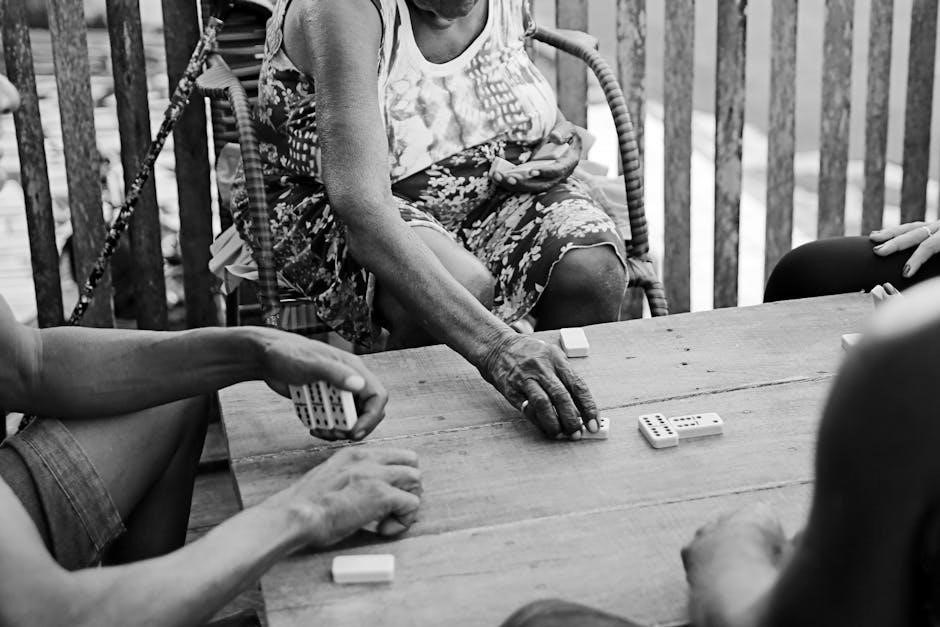
game of life board game instructions
Objective
The objective of The Game of Life is to navigate through life’s major milestones, such as education, career, marriage, and retirement, while accumulating the most wealth. Players start at college and make choices that impact their financial and personal lives. The goal is to end up with the highest amount of money at retirement, making strategic decisions along the way to maximize earnings and minimize losses.

Game Setup
Setting up The Game of Life is a straightforward process that ensures all components are organized and ready for play. Begin by unfolding the game board and placing it in the center of the playing area. Attach any bridges or buildings to their designated spots on the board, following the instructions provided.
Next, sort and prepare the cards. Separate the LIFE cards into four distinct piles: Career cards, Salary cards, House Deed cards, and Stock cards. Place these piles face-down near the board for easy access during gameplay.
Each player selects a car token and places it at the “Start” space on the board. The pegs, which represent family members, are also prepared. Each player begins with one peg in their car, simulating the start of their life journey.
The money pack should be divided by denomination and placed within reach of all players. This allows for quick transactions during the game; Finally, the spinner is positioned on the board, ready to determine the number of spaces each player moves on their turn.
By following these steps, the game is set up correctly, ensuring a smooth and enjoyable experience for all players.

Gameplay Mechanics
The gameplay mechanics of The Game of Life are designed to simulate the journey of life, with players making decisions and encountering random events that shape their outcomes. The game begins with each player choosing a car token and placing it at the “Start” space on the board. A spinner determines the number of spaces a player moves on their turn, adding an element of unpredictability.
As players progress, they encounter various spaces that represent life events, such as education, career choices, marriage, having children, buying a house, and investing in stocks. Landing on these spaces triggers specific actions, such as drawing cards, paying taxes, or collecting salary. For example, landing on the “Start Career” space allows a player to choose a career card, which determines their salary for the rest of the game.
One of the most iconic mechanics is the choice between the “Career Path” and the “College Path.” Players who choose the College Path pay tuition but have access to higher-paying career options later in the game. This decision significantly impacts their financial trajectory.
The game also incorporates unexpected twists, such as “Life” cards, which can either reward or penalize players. These cards simulate real-life events, such as receiving a tax refund or paying for medical bills. Players must adapt to these changes, making the game dynamic and engaging.
Another key mechanic is the accumulation of family members. Players may “have children” by adding pegs to their car, which increases their expenses but also provides opportunities for bonuses at the end of the game. Similarly, players can “adopt pets,” adding more complexity to their financial management.
As players near retirement, the game shifts focus to managing their final assets. The goal is to reach the “Retirement” space with the most money, ensuring victory. The combination of strategic decisions, random events, and financial management makes The Game of Life a classic and engaging experience.
Financial Management
In The Game of Life, financial management is a cornerstone of gameplay, requiring players to make wise decisions to accumulate wealth by retirement. The game introduces various financial elements, such as salaries, taxes, investments, and unexpected expenses, which players must navigate to maximize their funds.
One of the key aspects of financial management is the collection of salaries. Players receive their salary based on the career they choose. Those who pursue higher education through the “College Path” have access to higher-paying careers, which significantly boosts their earning potential. However, players who take the “Career Path” immediately start earning but may have lower income levels throughout the game.
Taxes are another critical factor. Landing on spaces marked with a tax symbol forces players to pay a percentage of their current savings, adding a layer of financial responsibility. Conversely, “Stock” spaces allow players to invest in the market, which can yield random returns, either increasing or decreasing their wealth.
The game also introduces unexpected expenses, such as medical bills or home repairs, through “Life” cards. These events can drain a player’s funds, making it essential to maintain a financial cushion. On the other hand, certain cards may provide windfalls, such as inheritances or bonuses, offering opportunities to boost savings.
Players must also manage the costs associated with raising a family. Adding children and pets increases expenses, as these require additional payments throughout the game. However, having more family members can also lead to bonuses at retirement, as players with larger families may receive rewards for successfully supporting their dependents.
Investment opportunities further diversify the financial strategy. Players can choose to invest in stocks, which come with risks and rewards, or purchase “Invest” cards that offer fixed returns. These decisions require balancing risk and reward, adding depth to the game’s financial mechanics.
Ultimately, the goal is to reach retirement with the most money. Players must carefully manage their income, expenses, and investments to ensure they finish the game with the highest possible savings. This aspect of The Game of Life teaches essential financial lessons while keeping the gameplay entertaining and engaging.

Life Events
The Game of Life is renowned for its realistic simulation of life’s unpredictable journey, with numerous events that mirror real-world experiences. Players encounter various milestones and challenges that shape their in-game progress, adding depth and excitement to the gameplay.
One of the most significant life events in the game is the choice of career. At the beginning of the game, players decide whether to pursue a career immediately or attend college. Those who choose the “College Path” can access higher-paying jobs, while those on the “Career Path” start earning sooner but may have lower salaries throughout the game. This decision sets the stage for future financial opportunities and challenges.
Marriage is another pivotal event in the game. Players have the option to marry, which introduces new dynamics to the game. Marriage can lead to additional family members, increasing both expenses and potential rewards. The addition of children and pets further complicates the financial landscape, as players must manage the costs associated with raising a family. However, having more children can also lead to bonuses at retirement, providing an incentive to balance the added expenses.
Throughout the game, players encounter unexpected life events through “Life” cards. These cards represent real-world situations such as medical emergencies, taxes, stock market fluctuations, and even inheritances. Landing on spaces with these cards forces players to adapt to unforeseen circumstances, which can either drain or boost their finances. For example, a medical emergency might require an immediate payment, while an inheritance could provide a welcome financial boost.
Retirement marks the culmination of the game, where players’ lifetime decisions come to fruition. The goal is to end up in the wealthiest retirement space, such as “Millionaire Estates,” which guarantees victory. Players with the highest accumulated wealth at retirement are declared the winners, making financial and life decisions throughout the game crucial to success.
These life events not only add variety to the game but also teach players the importance of planning and adaptability. By simulating real-life challenges and milestones, The Game of Life offers an engaging and educational experience that resonates with players of all ages.

Player Interactions
Player interactions in The Game of Life are a key aspect that enhances the social and competitive nature of the game. While the game is primarily focused on individual progression through life’s milestones, players do engage with each other in meaningful ways that add depth and excitement to the experience.
One of the primary forms of interaction is through trading and competition. Players can trade stocks or properties, allowing for strategic negotiations that can significantly impact each player’s financial standing. Additionally, certain spaces on the board may require players to pay money to others, creating opportunities for direct financial exchanges that can either hinder or help a player’s progress.
The game also encourages players to make choices that affect not only their own journey but also the dynamics of the group. For instance, players might choose to invest in the same career paths or compete for the most lucrative salaries, fostering a sense of rivalry. Moreover, the unpredictable nature of life events, such as unexpected windfalls or setbacks, can lead to moments where players might offer advice or react to each other’s fortunes, enriching the social aspect of the game.
While The Game of Life does not involve direct cooperative elements, the competitive nature of aiming to accumulate the most wealth by the end of the game creates a dynamic where players are indirectly interacting through their individual strategies. This blend of personal progression and group competition ensures that each player’s decisions are influenced by the actions and outcomes of others, making the game a balanced mix of solitary strategy and social engagement.
Winning the Game
Winning The Game of Life is determined by accumulating the most wealth by the time all players reach the end of the board, which represents retirement. The game concludes when the last player arrives at the “Retirement” space, and the final accounting of each player’s assets and debts is conducted.
To determine the winner, each player calculates their total wealth by adding up all cash, properties, investments, and other assets. Debts and outstanding payments are subtracted from this total. The player with the highest net worth at the end of the game is declared the winner. If two or more players have the same amount of wealth, the game rules typically declare a tie, though some house rules may include a tiebreaker mechanism.
One of the key strategies to win is to make smart financial decisions throughout the game. This includes choosing high-paying careers, investing in stocks, and purchasing affordable homes that appreciate in value. Players should also aim to minimize debts and avoid unnecessary expenses, as these can significantly reduce their net worth by retirement.
The final stages of the game are critical, as players must carefully manage their remaining money to maximize their wealth. Landing on certain spaces, such as “Stock Market” or “Invest,” can provide last-minute financial boosts, while others, like “Taxes,” can reduce a player’s wealth. Additionally, players who own properties like “Millionaire Estates” or “Pleasantville” receive bonus funds at the end of the game, further enhancing their chances of winning.
Ultimately, The Game of Life rewards players who balance risk and caution, make wise investments, and adapt to the unpredictable nature of life events. By strategically managing their finances and making informed decisions, players can increase their chances of ending the game with the most wealth and being crowned the winner.

Variations and Editions
Over the years, The Game of Life has spawned numerous variations and editions, offering fresh twists on the classic gameplay. These editions cater to different audiences, incorporate new themes, and reflect changes in societal norms and cultural values. Whether you’re a fan of the original or looking for something new, there’s a version of The Game of Life to suit every taste.
One of the most popular variations is The Game of Life: Junior Edition, designed for younger players. This version simplifies the gameplay, focusing on fun and educational experiences rather than financial complexity. It introduces kids to basic concepts of decision-making and consequence in a lighthearted way.
Another notable variation is The Game of Life: International Edition, which incorporates global themes and cultural differences. This edition allows players to experience life in different countries, with localized career options, salaries, and life events tailored to various regions. It’s a great way to learn about global lifestyles while enjoying the classic gameplay.
Themed editions have also become a hit among fans. For example, The Game of Life: Star Wars Edition immerses players in a galaxy far, far away, where they navigate the challenges of being a Jedi or Sith. Similarly, The Game of Life: Marvel Edition lets players take on the roles of their favorite superheroes, making decisions that impact their quest to save the world.
In recent years, digital versions of The Game of Life have emerged, offering a modern take on the classic board game. These digital adaptations allow players to enjoy the game online, with features like video chat, virtual spinners, and exclusive in-game content. They also introduce new mechanics, such as achievements and leaderboards, to enhance the experience.
Additionally, special editions like The Game of Life: 150th Anniversary Edition celebrate the game’s rich history. These editions often include vintage designs, commemorative packaging, and exclusive gameplay elements that honor the game’s legacy.
With so many variations and editions available, The Game of Life remains a timeless favorite, offering something for everyone. Whether you prefer the original formula, a themed twist, or a modern digital spin, the game continues to evolve while staying true to its core essence of simulating life’s journey.
The Game of Life is a timeless and iconic board game that has captivated players for generations. Its unique blend of strategy, luck, and life simulation makes it a standout experience for families, friends, and even solo players. The game’s ability to mimic real-life decisions and outcomes, from career choices to financial planning, provides both entertainment and a subtle educational value. Players of all ages can enjoy the journey from college to retirement, learning valuable lessons about money management, risk-taking, and the unpredictability of life.
One of the key reasons for its enduring popularity is its versatility. Whether you’re playing the classic version or one of its many themed editions, The Game of Life offers something for everyone. It’s a perfect addition to family game nights, casual gatherings, or even homeschooling activities, as it fosters bonding and healthy competition. The game’s simplicity ensures that even younger players can participate, while its depth keeps adults engaged.
Over the years, the game has evolved to reflect modern societal changes and cultural shifts. From digital adaptations to special editions, The Game of Life continues to innovate while staying true to its core identity. Its universal appeal lies in its ability to simulate life’s ups and downs, reminding us that success is not just about accumulating wealth but also about navigating life’s twists and turns.